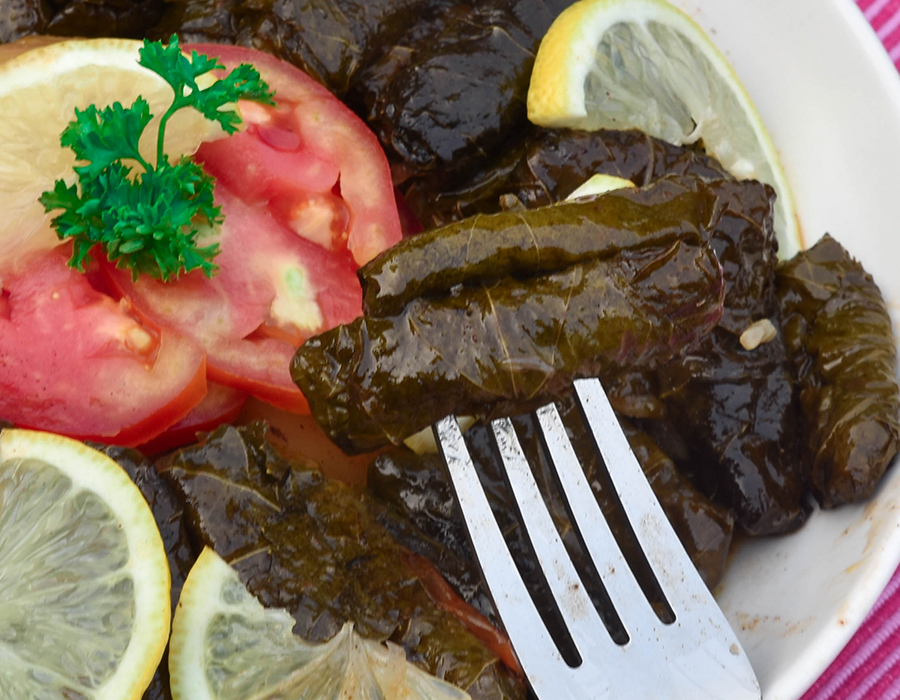
Authentic Vegetarian Stuffed Grape Leaves
Here is a solid Vegetarian stuffed grape leaf recipe to start with — ideally easy, straightforward and from a reliable source (my mama), follow it to the letter and success is yours. Also known in Arabic as warak enab are probably one of the most iconic Middle Eastern food out there. All you need is a few pantry staples for this irresistible Lebanese version. The leaves are wrapped around a savory filling of rice, tomatoes, onions, parsley, olive oil, lemon juice, pomegranate molasses and secret ingredient that will take your stuffed grape leaves from good to excellent, keep on reading to learn about it., and are seasoned with warm spices and cooked slow and low until meltingly tender just like you are eating tiny surprises of lemony rolls. Watch the detailed video tutorial.
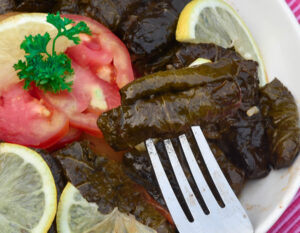
Authentic Vegetarian Stuffed Grape Leaves (Video)
There are many variations of stuffed grape leaves recipes in the Mediterranean and Arab world. They can be rolled around two different variety of stuffings, one can be vegetarian, just like today’s post or another one including minced meat. Recipes vary from country to country or family to family, but the main elements are almost the same. For our extended family reunions, it’s not a gathering unless we have vegetarian stuffed grape leaves and tabbouleh, they are first thing that disappear quickly from any table buffet., and whenever I am invited to parties and gatherings, I am asked to bring a plate of my vegetarian stuffed grape leaves. It is easy to transport to different functions, and always draws recipe requests.
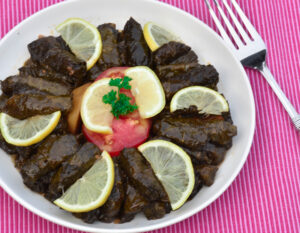
Fold them like mini cigars, fold over one side, then the other side, then the bottom and the final roll upward.
The filling can be made a day in advance and refrigerated in an airtight container.
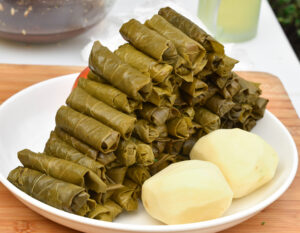
Ingredients needed:
- Grape leaves, fresh or in brine
- Short grain rice
- Tomatoes
- Parsley
- Onions
- Olive oil
- Freshly squeezed lemon juice, and please don’t use the ready bottles stuff
- Pomegranate molasses
- Sevenspice, or allspice
- Cinnamon powder
- Lebanese or Turkish coffee
- Salt
- Potato, to stack it on the bottom of the pot, optional
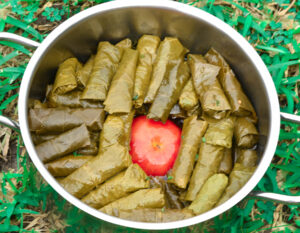
Watch the detailed video tutorial, it is so handy to learn the technique from A to Z.
Steps to make: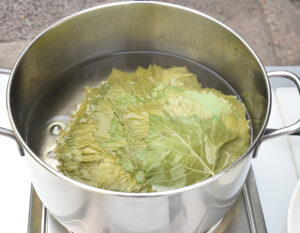
Blanch the grape leaves: Blanch the grape leaves in boiling water until they wilt and turn darker green. Remove with a slotted spoon and allow to cool down completely. Snip off the stems.
Soak the rice: Soak the rice in water for 30 minutes, transfer to a mesh-sieve and rinse under running cold water and drain.

Make the filling: Combine together the tomatoes, parsley, onions, rice, salt, olive oil, lemon juice, pomegranate molasses, cayenne pepper (if used) and black pepper. Drain the liquid from the mix. Your stuffing is ready now, save the liquid.
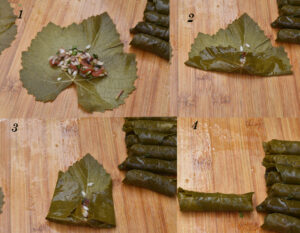
Stuff and roll the grape leaves: Using a sharp knife, trim the stem (if it is still on the leaf) and discard. Place a spoonful of the stuffing close to the bottom of the leaf and line it up horizontally. Fold both sides and roll from the bottom to the top. Repeat the process with the remaining grape leaves.

Stack the grape leaves in a pot: In a large pot, transfer the potato discs to a large pot, and distribute them evenly in one layer. Stack 1 large tomato in the center of the pot. Neatly and tightly stack the grape leaves around the tomato in a circular rythme. Be sure that the seam of the leaves are facing downwards to prevent it from unravelling during cooking.

Cook the grape leaves: Mix the liquid retained from the stuffing with 1/3 cup of water, taste the salt, and adjust it to your liking and pour over the stuffed leaves. Cover with a heatproof plate, place on medium to high heat until it is brought to a boiling point. Cover the pot and let it simmer on low heat for about one hour or until fully cooked. Remove from heat and keep it in the pot until it it lukewarm. This will help the grape leaves absorb some of the liquid in the pot, making your grape leaves more juicy.
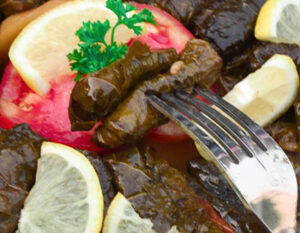
Straightfarward but laborious!
As you can see, the recipe is straightforward and no tricky ingredients are involved, but I have to admit, it is laborious and takes time and effort to roll these grape leaves, but it would be therapeutic practice if you are rolling them with a group of people. I really enjoy it that way and as we gather around the table to roll a huge batch of warak enab, the power of collaboration, makes it an adventure.
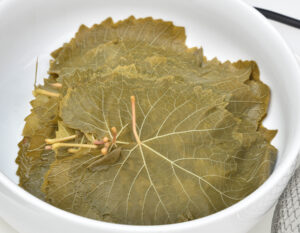
Fresh or jarred in brine grape leaves.
Of course, nothing like fresh grape leaves, If you are lucky enough to have a vineyard with grape leaves, you’re supposed to pick them when they still tender and pliable, the ideal ones are the ones that are the size of the palm of your hand, too big they will be tough, and too small, you will have a hard time to roll them. Anyway, grape leaves packed in brine can do the job, they are available at large supermarkets and at Middle Eastern markets, choose a good brand and avoid the tough leaves, they will disappoint you ever after blanching.
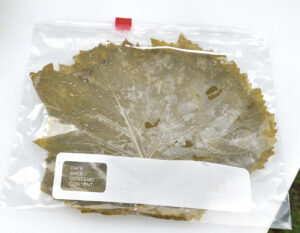
How to freeze fresh grape leaves?
Pick the tender grape leaves, leaving the stems intact. Delicately, wash the leaves and stack them underside up, with the stems on top of each other. Group about every 20 leaves in one stack. Bring about 8 cups of salted water to a boil and add one stack at a time. Leave it about 30 seconds until they wilt enough to wilt and turn darker green. Remove with a slotted spoon and allow to cool down. Transfer to freezer bags and freeze.
Your recipe features pomegranate molasses, can I skip it?
Pomegranate molasses is the secret ingredient that will take the grape leaves from good to excellent, but if you are not a fan skip it.
Adding Lebanese coffee to the filling sounds weird to me!
Believe it or not, this ingredient will take the grape leaves from good to excellent. You won’t feel the taste of coffee, just a flavor enhancer, I highly recommend it.
1 cup of olive oil sounds a lot to me, can I reduce it to a half cup?
The generous amount of olive oil adds so much flavor and density to the grape leaves, but of course you can reduce to your liking.
Is it served warm or cold?
Now, this is a meatless version, it is common practice to serve at room temperature or slightly cooler.

Growingup my mama’s vegetarian grape leaves were my favorite thing on the planet, just like you are eating tiny surprizes of juicy and lemony favored bites. Unfortunately, I often get disappointed by grape leaves elsewhere. Trust me on this, it is a great version. Watch the detailed video tutorial above!
- Author: Hadia Zebib Khanafer
- Cooking time: 60 minutes
- Serving: 4 to 5 persons
- Cuisine: Lebanese and Middle Eastern
Ingredients:
- 250 gram /9 oz fresh grape leaves
- 3/4 cup short grain rice
- 5 medium sized tomatoes, finely chopped
- 1 more large tomato to stack it in the center of the pot
- 1 large potato, sliced to 1/2 inch thick discs, optional
- 2 cups fresh parsley, finely chopped
- 1/2 cup mint leaves, chopped
- 2 large onions, finely chopped
- 1 cup high quality olive oil
- 1/2 cup freshly squeezed lemon juice
- 3 tablespoons pomegranate molasses
- 1/2 teaspoon sevenspice or allspice
- A pinch of cinnamon
- Cayenne pepper, optional
- 1 leveled teaspoon Lebanese / Turkish coffee (in the powdered form)
- 1/3 cup water
- 1 tablespoon salt, or to taste
Directions:
- Pick the tender grape leaves, leaving the stems intact. Delicately, wash the leaves and stack them underside up, with the stems on top of each other. Group about every 20 leaves in one stack. Bring about 8 cups of salted water to a boil and blanch one stack at a time. Leave it about 30 seconds until they wilt enough to wilt and turn darker green. Remove with a slotted spoon and allow to cool down completely. If using preserved grape leaves simply rinse and drain them.
- Using a sharp knife, trim the stem (if it is still on the leaf) and discard.
- Soak the rice in water for 30 minutes, transfer to a mesh-strainer and rinse under running cold water and drain.
- In a deep bowl, mix the rice, parsley, mint, onions, tomatoes, salt, cinnamon powder, sevenspice, cayenne (if used), Lebanese coffee (the secret ingredient), lemon juice, olive oil, lemon juice and pomegranate molasses. Mix well to infuse everything together. Drain the liquid from the mix. Your stuffing is ready now, save the liquid, it its liquid gold, it captures all the umami flavors.
- Spread each grape leaf on a flat surface with the veiny side up.
- Place a spoonful of the stuffing close to the bottom of the leaf and line it up horizontally. Fold both sides and roll from the bottom to the top.
- Repeat the process with the remaining grape leaves.
- In a large pot, transfer the potato discs to a large pot, and distribute them evenly in one layer. Stack 1 large tomato in the center of the pot.
- Neatly and tightly stack the grape leaves around the tomato in a circular rhythm. Be sure that the seam of the leaves are facing downwards to prevent it from unravelling during cooking.
- Mix the liquid retained from the stuffing and pour over the stuffed leaves, pour the 1/3 cup of water, taste the salt, and adjust it to your liking
- Cover with a heatproof plate, place on medium to high heat until it is brought to a boiling point. Cover the pot and let it simmer on low heat for about one hour or until fully cooked. Remove from heat and keep it in the pot until it it lukewarm. This will help the grape leaves absorb some of the liquid in the pot, making your grape leaves more juicy. Happy eating.
- Transfer them to a shallow serving dish and decorate with lemon wedges, douse the grape leaves with the remaining dense lemony liquid in the pot for more juicy flavor. Watch the detailed video tutorial above. It is very helpful!
Storage: Stuffed grape leaves can be refrigerated that way for up to 5 days. They taste even better after a day or two in their cooking liquid.
Looking for more inspired stuffed Lebanese recipes?
Koussa Mahshi/ Stuffed zucchini in tomato sauce: Hearty and full of texture, Mahshi/ Koussa wa Batenjan Mahshi/ refers to zucchini and eggplants that are stuffed with a mixture of rice and minced meat and simmered in tomato sauce. Even though this classic Lebanese comfort food dish is easy to prepare and made of simple ingredients, it inherently feels like a special occasion dish.
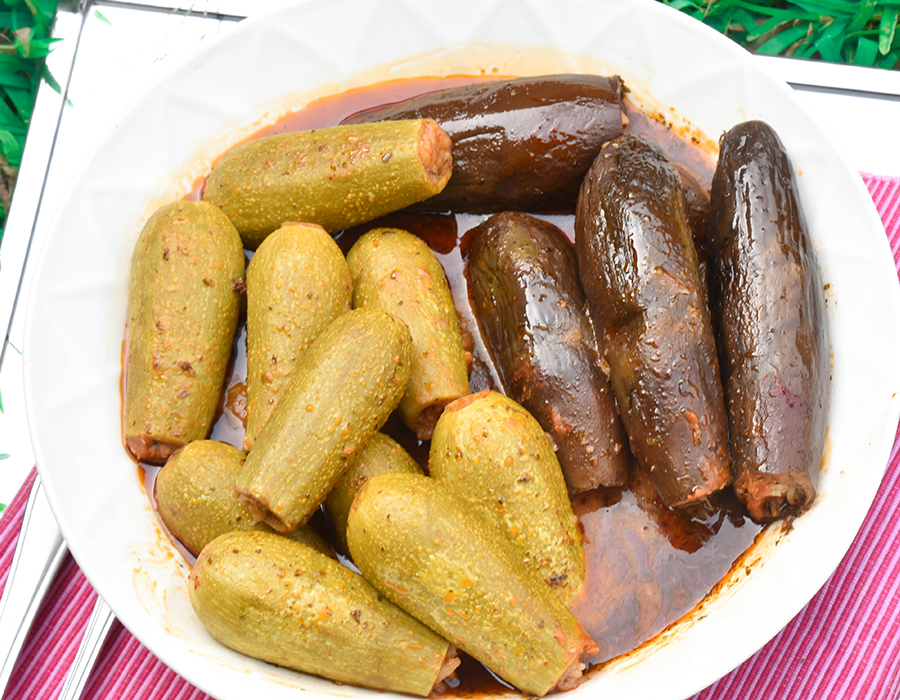
Kousa Bil Laban/zucchini in Yogurt: The recipe starts with zucchini that are hollowed out and are stuffed with a flavor-packed filling of rice and meat, the zucchini are poached in water, drained then simmered to perfection in a fragrant garlicky yogurt sauce.
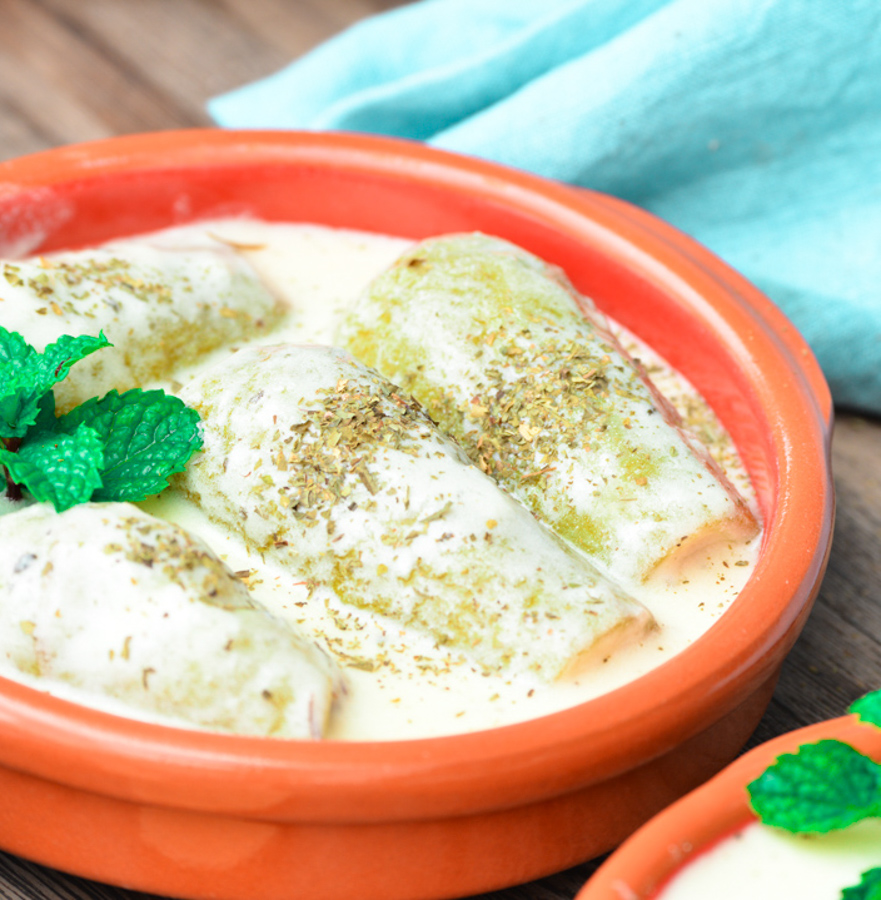
If you make the "Authentic Vegetarian Stuffed Grape Leaves", leave a comment below, or share your pictures on Facebook! I would love to see your creations!! Hashtag, #Hadia’s lebanese Cuisine
Subscribe to Our Newsletter
Instructions
No Steps Found !
- Course : APPETIZERS, Snacks
- Recipe Type : APPETIZERS, Hadia Zebib Khanafer, MAIN DISHES, RECIPES FROM AROUND THE WORD, Snacks
- Ingredient : GRAPE LEAVES, Lemon Juice, Olive Oil
About Chef
Hadia Zebib
I am Hadia, the face behind Hadia’s Lebanese Cuisine. I grew up in Beirut Lebanon and I currently reside in Kinshasa, Congo with my husband and my three adorable sons, ...
Read more about this chef..


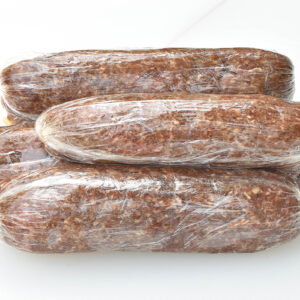

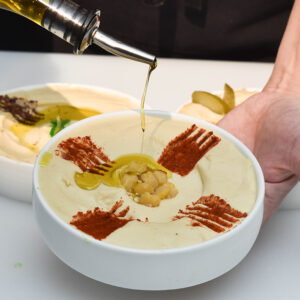

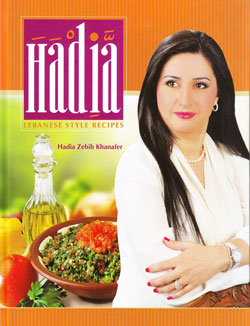
No comments yet.